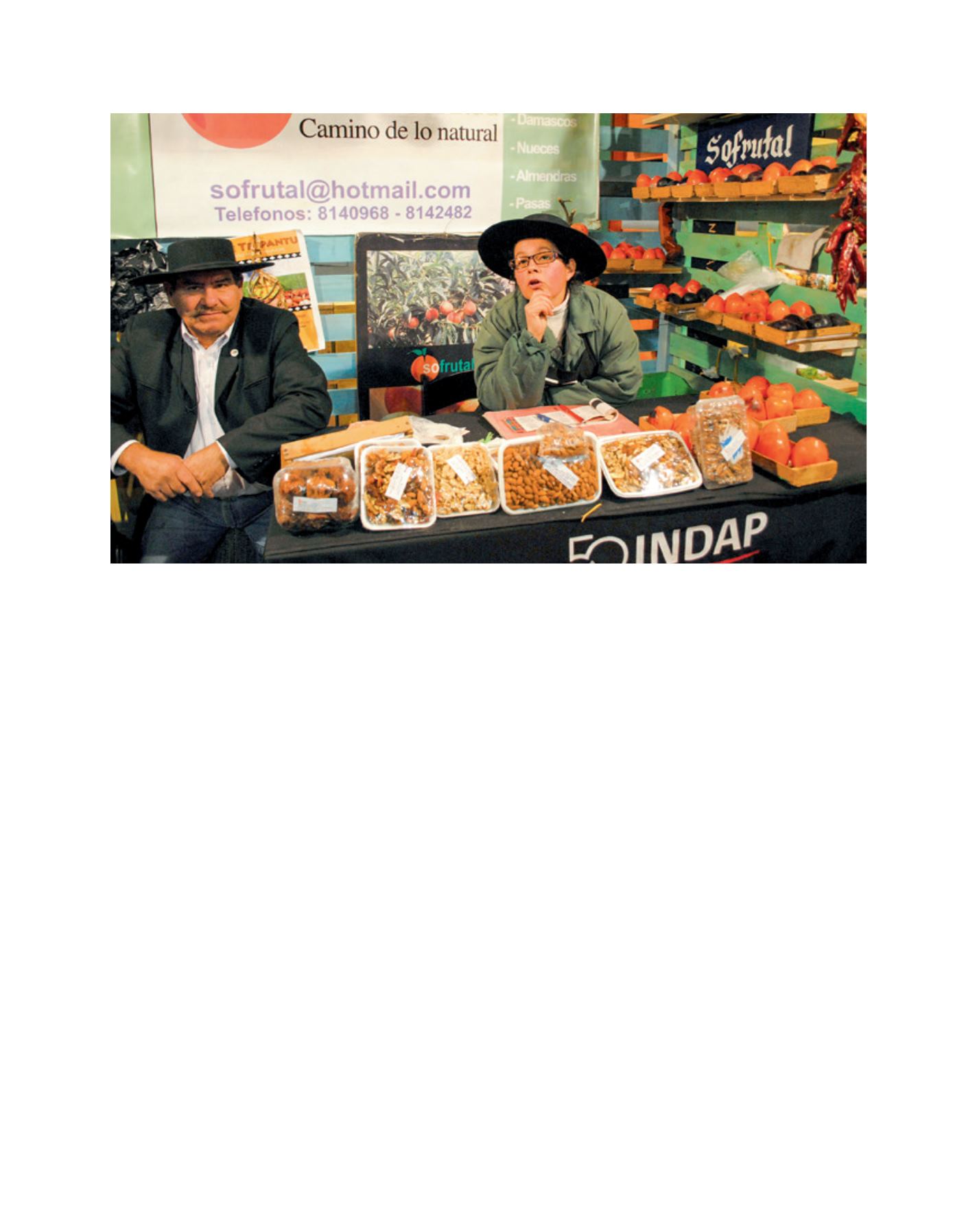

[
] 133
represent about 40 per cent of the stratum of small farmers,
equivalent to around 100,000 farms. This group has signifi-
cant internal variation, since the value of farm production is
between US$5,000 and US$100,000 annually.
A major weakness of peasant family agriculture is the
limited ability of farming families to negotiate advantageously
with product markets, as well as with markets for inputs and
services. This is due to different reasons that operate as disad-
vantages over other agents, such as the scale of production,
information asymmetries, higher transaction costs per unit
of product traded, logistical constraints (collection, trans-
port, storage, packaging, value addition etc.), health and tax
informality, and the quality and suitability of its products.
Partnership is another important constraint: in 2013 a total
of 236 peasant cooperatives were registered in the ‘active and
valid’ category, which together congregate more than 5,000
members. This indicates that there is a big gap with the total
peasant farming population.
The Agricultural Development Institute (INDAP) is the
public agency responsible for supporting family farms in the
country, for which it has a budget of approximately US$400
million annually. This is applied in three main areas: tech-
nical assistance and training programmes; working capital
financing; and non-returnable subsidies for machinery,
infrastructure and other property taxes investments. From
an organizational standpoint, INDAP unfolds through 15
regional offices and 127 area agencies and offices, covering
the entire national territory. It has a staff of over 1,600 people,
complemented with 4,770 consultants hired by INDAP to
carry out direct technical assistance work with producers.
INDAP currently serves 167,500 farmers, implying a cover-
age of 65 per cent of the potential total.
INDAP promotes local economic development through
different instruments. One is the Local Development
Programme (PRODESAL), which primarily runs through
the municipalities. INDAP transfers resources through
a collaboration agreement, and these are complemented
by the implementing entities’ own resource provisions.
These resources must be spent on hiring consultants to
deliver ongoing technical assistance to the farmers in the
programme, which is organized into operating units of
between 60 and 180 farmers. Additionally, INDAP deliv-
ers resources for investment and working capital to the
peasant families, with amounts ranging between US$800
and US$2,000 annually.
INDAP has another similar programme for the indig-
enous world, the Indigenous Territorial Development
Program. This works in a similar way to PRODESAL, but
is more appropriate from a cultural standpoint. Finally,
INDAP has a contestable fund investment, the Investment
Development Program, which finances larger individual or
associative projects with a public subsidy of 90 per cent of
the value of each project. Amounts vary for each project
because each is analysed on its own merit. The funds could
be used to finance tractors or other machinery, irrigation
infrastructure, warehouses, fences, tourist equipment, solar
panels, fertilizers and many other types of investment.
Additionally, INDAP has complementary programmes
including lines of credit and project programmes that seek
to improve marketing.
Images INDAP
INDAP supports family farms in the country with technical assistance, training programmes and financing
D
eep
R
oots
















